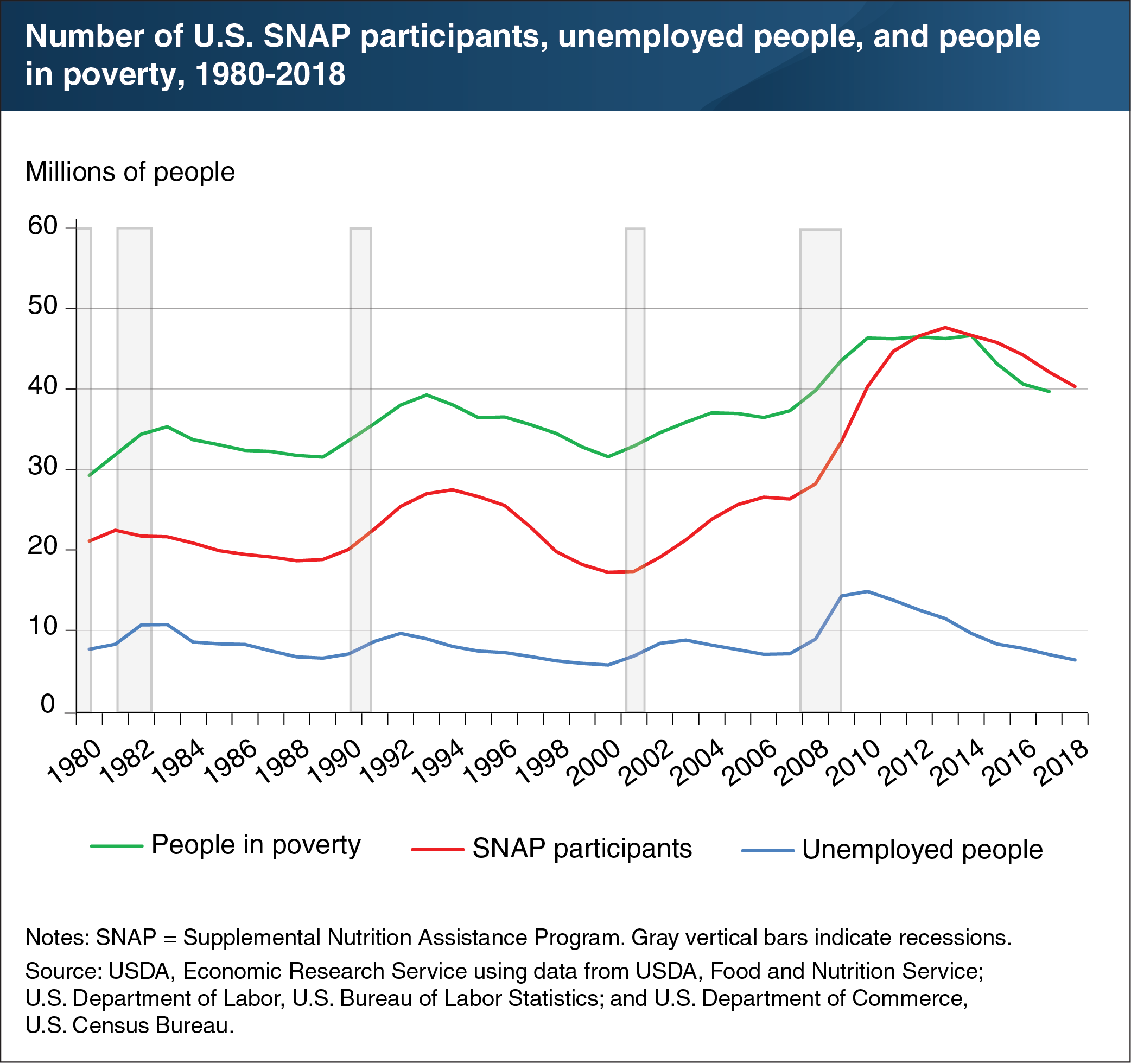Number of people receiving SNAP benefits is linked to the strength of the economy
- by Laura Tiehen
- 5/13/2020

USDA’s Supplemental Nutrition Assistance Program (SNAP) is the Nation’s largest food and nutrition assistance program. SNAP is available to most needy households with limited incomes and assets, subject to certain work and immigration status requirements. As a means-tested program, the number of people eligible for SNAP is inherently linked to the health of the economy, making it one of the Nation’s primary countercyclical assistance programs—contracting during periods of economic growth and expanding during economic downturns. National statistics from 1980 to 2018 on employment, poverty, and SNAP participation provide historical context for current U.S. economic conditions. Historical statistics reveal that the number of SNAP participants generally tracks the number of unemployed people and the number of people in poverty in the United States. Improvement in economic conditions during the early stages of an economic recovery may take longer to be felt by the low-wage workers who are more likely to receive SNAP benefits, resulting in a lagged response of SNAP participation to a reduction in the unemployment rate. This chart appears in the Economic Research Service report, The Food Assistance Landscape: FY 2018 Annual Report, April 2019.

